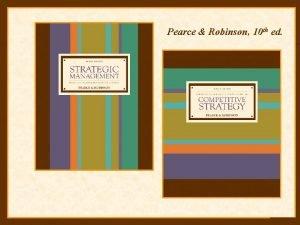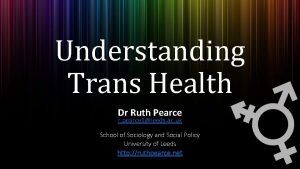Forward from David Pearce Snyder Consulting Futurist The


- Slides: 2

Forward from David Pearce Snyder, Consulting Futurist The future is our common destination. It’s where we’re all going to spend the rest of our lives. But, as a “place” in time, the future differs from a physical destination in two crucial respects. First, we don’t have any choice about traveling to the future. We’re all going there whether we like it or not. What’s more, once we get to the future, if we don’t like it – or are ill-prepared to deal with its realities – we can’t come back to the present. The future is “for keeps. ” This is why long-range planning merits the investment of our time and attention, and ultimately, our cash flow. At this moment of accelerating innovation and change, purposeful planning and leadership must be based on the reliably-forecastable demographic, economic and technologic trends and developments that will predictably reshape the marketplace realities for all organizations, their customers and their suppliers. Strategic leadership must provide foresight for all stakeholders. (continued)

Forward (continued) Any executive will tell you; however, that foresight is useless if it does not become the basis of a long-range plan of action. And, as futurists like myself will tell you, accurately forecasting long-term opportunities and threats is easy to do for any industry, trade or profession. What’s really hard is getting organizations to actually design and carry out a strategic plan of action to take advantage of those long-range opportunities or to head off those long-term threats. Really effective strategic planning is tough. To begin with, we all live in a short-term world, which pre-occupies us with immediate problems to solve and immediate deadlines to meet. Just getting people to pay attention to a long-term trend is a challenge. Moreover, to sustain itself through 5 or 10 years of short-term distractions, a successful strategic action plan must be built upon an institution-wide consensus. Creating a consensus commitment for long-term action is the greatest challenge to strategic leadership. This guide to Association and Non-Profit Strategic Planning and Research provides a step-by-step, evidence-based process for developing and implementing a strategic plan of action by creating a committed, self-renewing consensus of stakeholders who share a common vision of the future and a common desire to make it happen. David Pearce Snyder The Snyder Family Enterprise david@the-futurist. com



